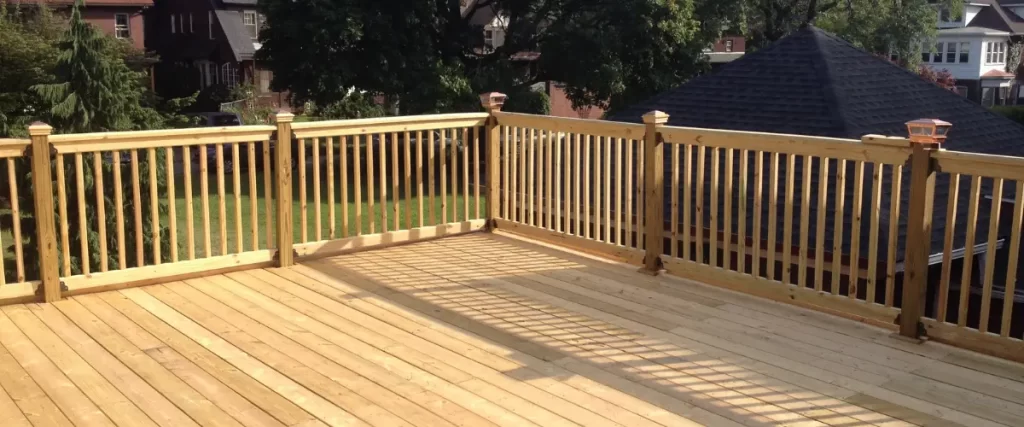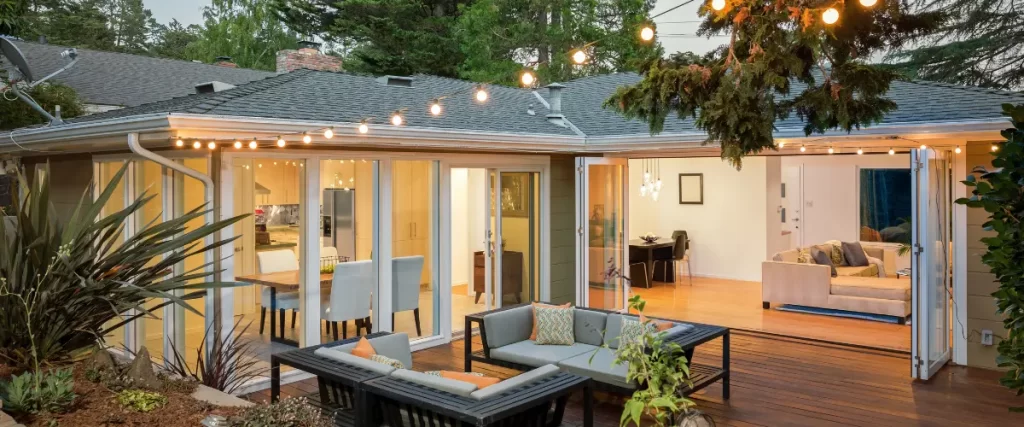Living in Omaha, you’re likely familiar with the challenges posed by hard water. With water hardness levels averaging around 188 parts per million (ppm), Omaha’s water is considered “hard” by the U.S. Geological Survey standards citeturn0search15. While hard water is safe to drink, it can wreak havoc on your home’s exterior features, particularly wooden decks.
The high mineral content in hard water, primarily calcium and magnesium, can lead to unsightly stains and long-term damage to your deck. If you’ve noticed white, chalky residues or dark spots on your deck, hard water is likely the culprit.

Understanding Hard Water and Its Impact on Decks
What Is Hard Water?
Hard water contains elevated levels of dissolved minerals, especially calcium and magnesium. When this water evaporates, it leaves behind mineral deposits that can accumulate on surfaces, including your deck.
How Does Hard Water Affect Your Deck?
Hard water can leave mineral deposits that cause several issues. Staining is a common problem, leaving white or grayish spots that ruin the look of your deck. Over time, mineral buildup can lead to surface degradation by eroding protective finishes, which exposes the wood to further damage.
Additionally, the moist environments created by water deposits can encourage mold and mildew growth, posing health risks and causing structural problems.
Omaha’s Climate and Its Role in Deck Damage
Omaha experiences a humid continental climate with hot summers and cold winters, which can worsen the effects of hard water on your deck. During the summer, the heat accelerates water evaporation, leaving behind more mineral deposits. In the winter, snow and ice can trap minerals against the wood, causing deeper penetration and damage.
Additionally, Omaha’s freeze-thaw cycles can make the wood expand and contract, increasing its susceptibility to cracking and splitting when weakened by hard water damage.

Identifying Hard Water Damage on Your Deck
Recognizing the signs of hard water damage early can save you time and money. Look out for:
Discoloration includes white, chalky spots or dark stains. Texture changes appear as rough or uneven surfaces where mineral deposits have accumulated.
Peeling or flaking finish occurs when protective coatings deteriorate due to mineral buildup. Mold or mildew shows up as black or green patches, indicating moisture retention.
Preventative Measures to Protect Your Deck
Regular Cleaning
Implement a routine cleaning schedule to remove mineral deposits before they cause damage:
Sweep: Remove debris to prevent scratches and mold growth.
Wash: Use a mild detergent and soft brush to clean the surface.
Rinse: Use distilled water if possible; if using hard water, dry the deck immediately with a towel or blower to prevent mineral deposits citeturn0search12.
Sealing and Staining
Applying a high-quality sealant or stain can provide a protective barrier against moisture and minerals:
Sealants: Protect against moisture infiltration.
Stains: Offer UV protection and enhance the deck’s appearance.
In Omaha’s climate, it’s recommended to reapply sealant or stain every 2-3 years to maintain optimal protection citeturn0search34.
Water Softeners
Installing a water softener can reduce the mineral content in your home’s water supply, minimizing the potential for hard water damage. This is particularly beneficial if you use sprinklers or hoses connected to your home’s water system for deck cleaning or watering nearby plants.
Cleaning Hard Water Stains: Step-by-Step Guide
If your deck already shows signs of hard water staining, follow these steps to clean it:
Prepare a Cleaning Solution: Mix equal parts white vinegar and water.
Apply the Solution: Use a spray bottle to apply the mixture to stained areas.
Scrub Gently: Use a soft-bristled brush to scrub the stains.
Rinse Thoroughly: Use distilled water to rinse the area.
Dry Immediately: Use a towel or blower to dry the deck, preventing new mineral deposits.
For stubborn stains, consider using a commercial deck cleaner designed to remove mineral deposits. Always follow the manufacturer’s instructions and test the product on a small area first.

Best Decking Materials to Resist Hard Water Damage
Choosing the right decking material can make a significant difference in resisting hard water damage.
Top Decking Materials:
Composite Decking: Made from a blend of wood fibers and plastic, composite decking is resistant to moisture and staining.
Pressure-Treated Wood: Treated with chemicals to resist rot and insect damage, though still susceptible to moisture-related issues if not properly maintained.
Cedar and Redwood: Naturally resistant to decay and insects, but require regular maintenance to prevent moisture damage.
When selecting decking materials, consider factors like maintenance requirements, appearance, and budget to choose the best option for your home. Contact us at (402) 369-5724 to kickstart your deck building project!
